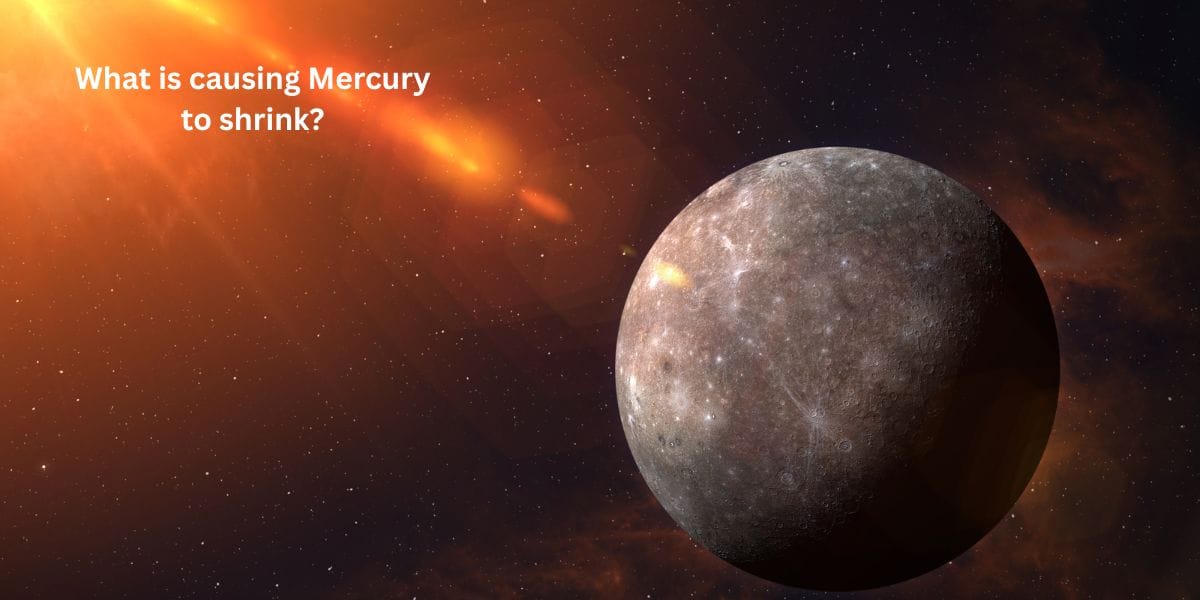Just like a grape shriveling into a raisin, Mercury, the smallest planet in our solar system, is slowly shrinking! As the planet cools over time, its surface wrinkles and contracts, creating towering cliffs across its rocky landscape. Scientists compare this process to fruit drying out, but on a planetary scale!
Scientists have discovered that Mercury is shrinking. Yes, a whole planet is getting smaller! But how? Unlike a grape, Mercury isn’t losing water. Instead, it’s cooling down from the inside. As it cools, the planet’s surface wrinkles and folds, just like a raisin’s skin.
So, what exactly is making Mercury shrink? Let’s find out!
Why Is Mercury Shrinking?
Mercury is shrinking because it is cooling down. When planets form, they are very hot inside. Over billions of years, they slowly lose heat. As Mercury cools, its core (the center) contracts, or gets smaller. This makes the whole planet shrink.
Think of it like a balloon. When you let air out, the balloon gets smaller. Mercury is like that balloon, but instead of air, it’s losing heat.
Fun Fact:
- Mercury has shrunk by about 14 kilometers (8.7 miles) in diameter since it formed!
How Do Scientists Know Mercury Is Shrinking?
Scientists study Mercury’s surface to see the changes. They use spacecraft like NASA’s MESSENGER, which orbited Mercury from 2011 to 2015. The spacecraft took pictures of the planet’s surface and found huge cliffs called “lobate scarps.”
These scarps look like long wrinkles on Mercury’s surface. They form because the planet’s crust (outer layer) cracks and folds as the inside cools and shrinks.
Example:
Imagine baking a cookie. As it cools, the edges sometimes crack. Mercury’s surface does the same thing—just on a much bigger scale!
Is Mercury the Only Planet That Shrinks?
No! Other rocky planets, like Earth and Mars, also shrink a little as they cool. But Mercury shrinks much more because:
- It is small, so cooling affects it more.
- It has a very large iron core, which cools faster.
Earth shrinks too, but very slowly. We don’t notice it because Earth’s surface is always moving due to plate tectonics.
Fun Fact:
- Mars has wrinkles too, but not as many as Mercury!
Will Mercury Keep Shrinking Forever?
Yes, but very, very slowly. Mercury has been shrinking for billions of years, and it will keep cooling. However, most of the shrinking already happened long ago. Now, the process is much slower.
One day, far in the future, Mercury might stop shrinking completely when its core becomes cold. But that won’t happen for a very long time!
Example:
A hot cup of coffee cools quickly at first, but then it cools slowly. Mercury is like that coffee—it shrank fast in the past but now does it slowly.
What Would Happen If Earth Shrank Like Mercury?
If Earth shrank like Mercury, we would see:
- More earthquakes and volcanoes.
- New mountains and cliffs forming.
- Changes in ocean floors.
Luckily, Earth’s crust moves in a way that spreads out the shrinking effect. So, we don’t have to worry about Earth wrinkling like Mercury!
Fun Fact:
- Mercury has no tectonic plates, so its shrinking causes big wrinkles. Earth’s plates move, so the shrinking effect is spread out.
Could Mercury Disappear Completely?
No, Mercury won’t disappear. Even though it’s shrinking, it will always stay a planet. It will just become a little smaller over time.
Planets don’t vanish—they just change slowly. Mercury will keep orbiting the Sun, even if it gets a bit smaller!
Conclusion
Mercury is shrinking because its inside is cooling down. This makes the planet’s surface wrinkle like a raisin. Scientists study these changes to learn more about how planets evolve.
While Mercury will keep shrinking, it won’t disappear. It’s just getting a little smaller with time—like an old balloon losing air.
How fast is Mercury shrinking?
Mercury shrinks very slowly—about 1 to 2 kilometers every billion years.
Does shrinking affect Mercury’s orbit?
No, shrinking doesn’t change Mercury’s orbit. It still moves around the Sun the same way.
Can we see Mercury shrinking from Earth?
No, the shrinking is too slow to see. Scientists need special spacecraft to study it.
Will Mercury ever stop shrinking?
Yes, one day its core will cool completely, and the shrinking will stop.
Does Mercury’s shrinking cause earthquakes?
Yes, but they’re called “Mercury-quakes” since they happen on Mercury!
Is Mercury still active inside?
A little. Some parts may still be cooling, but most shrinking already happened.
Could Mercury break apart from shrinking?
No, the planet is strong enough to stay together.
How do we know Mercury has a large core?
Scientists measure Mercury’s gravity and magnetic field to guess its core size.
What other planets are shrinking?
Mars and Earth also shrink a little, but not as much as Mercury.
Will Mercury become the smallest planet?
It already is! Mercury is the smallest planet in our solar system.
